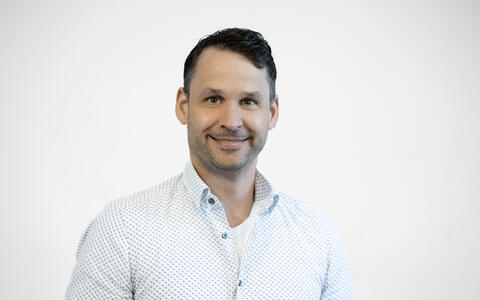HI-TAC expands
In 2023 the Max Delbrück Center and Heidelberg University announced the formation of a research collaboration to focus on AngioCardio Science – a new research area that combines cardiac and vascular research. The Helmholtz Institute for translational AngioCardioScience (HI-TAC) is an external branch of the Max Delbrück Center based at the campus of Heidelberg University. The Berlin-based Max Delbrück Center and the Medical Faculties of Mannheim and Heidelberg of Heidelberg University jointly founded HI-TAC to pool their expertise in cardiovascular and systems biology. We are pleased to announce the first four HI-TAC guest research groups.
Blood vessels and circadian rhythms
Mahak Singhal
Dr Mahak Singhal leads the Junior Research Group AngioRhythms in Health and Disease at the European Center for Angioscience (ECAS) of the Medical Faculty Mannheim, Heidelberg University, where he explores the function of blood vessels. Researchers are learning that blood vessels are more than just conduits for transporting nutrients, oxygen, and waste products, they also send signals that maintain the body’s homeostasis. At the same time, blood vessel dysfunction can support the development of diseases like cancer and chronic inflammation.
Singhal takes a cross-disciplinary approach to understanding this dual role of the vascular system. One of his goals is to figure out how blood vessels behave differently in different organs. He is particularly focused on identifying the early molecular triggers of disease. “We still don’t know if there is a particularly sensitive vascular population that when perturbed, results in the initiation of disease.”
Now as part of HI-TAC, he is also studying circadian rhythms and how endothelial cells adapt to the daily oscillations in environmental stimuli. For example, people generally eat only at certain times during the day, he explains, but not at night. That means the liver for one is more active during the day. Singhal and his team plan to investigate how blood vessels dynamically adapt to support this daily change in organ function.
RNA splicing errors and heart disease
Maarten van den Hoogenhof
Dr Maarten van den Hoogenhof, Junior Research Group Leader at the Medical Faculty Heidelberg, Heidelberg University, studies RNA splicing and how this affects the heart. Much of his research over the past several years has specifically focused on how mutations in the RBM20 gene cause arrhythmogenic dilated cardiomyopathy (ADC), a severe type of heart disease. RBM20 codes for a protein that binds to specific messenger RNA sequences and influences how they are cut and joined together – a process called RNA splicing.
When our cells make proteins, they first create a copy of the gene in RNA. This RNA includes both protein-coding sections, called exons, and filler sections called introns that are removed. RNA splicing is a step where the cell cuts out the introns and joins the exons together to create the final instructions for making a protein. Mutations in the RBM20 gene lead to faulty splicing and consequently, faulty protein.
Van den Hoogenhof has been working to understand the mechanism of how this faulty splicing causes ADC. Now that he has joined HI-TAC, he is collaborating more closely with Max Delbrück researchers Professors Norbert Hübner and Michael Gotthardt, who both study cardiovascular disease. “We now have a much better understand of how mutations in RBM20 lead to ADC,” says van den Hoogenhof, who is working on developing treatments. Based on their findings, his lab is now testing novel therapeutics to treat ADC.
Cell communication to repair tissue
Arica Beisaw
Dr Arica Beisaw, Junior Research Group Leader at the Medical Faculty Heidelberg, Heidelberg University, is exploring how cardiomyocytes regenerate after injury. In a healthy heart, cells work together to keep blood pumping. But when the heart is damaged, such as during a heart attack, the body often replaces the injured area with scar tissue made of collagen instead of new muscle cells. This scar tissue doesn't contract like healthy heart muscle, which can weaken the heart over time and lead to heart failure.
A major focus of her research is on uncovering the transcriptional and epigenetic networks that guide heart regeneration. Transcriptional networks involve the way genes are turned on or off, while epigenetics refers to chemical modifications that affect gene activity without changing the DNA sequence itself. Her affiliation with Hi-TAC will strengthen another focus of her lab: how heart cells communicate with one another – or intercellular communication – to coordinate the repair process. She is particularly interested in how these signals help new cardiomyocytes grow and repopulate areas of the heart that have been damaged and filled with collagen.
Her lab is planning several projects to understand the spatial distribution of cell-to-cell interactions at the wound border zone. They will also engineer systems to be able to observe these interactions and study their importance during the repair process.
How heart cells cope with extra DNA
Chi Chung Wu
Dr Chi Chung Wu leads the Junior Research Group Ploidy and Organ Physiology at the European Center for Angioscience (ECAS) of the Medical Faculty Mannheim, where he investigates a mysterious feature of heart cells: polyploidy – a condition where a cell contains more than the usual amount of DNA. Most of the cells in our bodies are diploid, meaning they carry two copies of each chromosome, one from each parent. But in some organs, including the heart, certain cells can become polyploid, carrying extra copies of their genetic material. This can happen naturally during development, in response to injury, or as part of the aging process.
Wu is specifically focused on understanding the biological signals and mechanisms that regulate polyploidy in heart cells. He is also exploring how this extra DNA affects the cells’ ability to function and regenerate. His affiliation with HI-TAC will provide greater opportunities for collaborative research with experts in cardiovascular biology, immunology, cell biology as well as clinicians, he says. “These interactions will strengthen our research on how intercellular communication influences cardiomyocyte polyploidization and help translate our findings in the future.”









